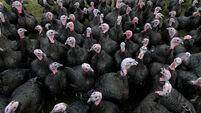Bank predicts more stable dairy market
More stable dairy markets are suggested by their predictions of modest demand improvement, small reductions in export supplies, a gradual sell-off of EU intervention stocks to world markets and a modest softening in Chinese import volumes.
According to the Rabobank report, market recovery in recent months was helped significantly by reduced supply in the southern hemisphere, with little evidence that northern hemisphere supplies will increase until at least March or April. As a result, Dutch whey prices rose 71% to €650 per tonne, since the beginning of 2009.













